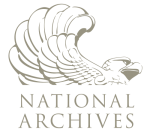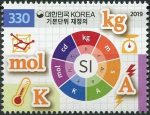(Explore the history and landscape of the United States with us as we approach the 250th anniversary of American Independence. Get out your homeschool atlas and almanac and follow along!)
Oklahoma is our homeschool state-of-the-week, so why not spend a few minutes today with your students learning about one of Oklahoma’s most important natural and historical places: Chickasaw National Recreation Area, which preserves the rich natural landscape and famous mineral springs of south-central Oklahoma.
![[Homeschool American Heritage]](https://upload.wikimedia.org/wikipedia/commons/thumb/5/5b/Little_Niagra_Falls_on_Travertine_Creek%2C_Sulphur_Oklahoma_-_panoramio.jpg/1024px-Little_Niagra_Falls_on_Travertine_Creek%2C_Sulphur_Oklahoma_-_panoramio.jpg)
“For over one hundred years this park has been a refuge for outdoor tradition; a protected niche of parkland where styles may change, but where recreation remains a relaxing way of life.”
Originally known as Sulphur Springs Reservation, and later renamed Platt National Park, the park was established in 1902 through an agreement with the Chickasaw and Choctaw Nations and the federal government. The Chickasaw Nation sold the land to the government in order to protect the unique freshwater and mineral springs along Travertine and Rock Creeks. Even with these protections, the popularity of the area continued to grow in the early 1900s.
Though a number of landscape elements in the Platt District relate to the early period of the park’s establishment, the majority of historic landscape resources relate to the period from 1933–1940.
During this period, NPS professionals planned and designed extensive park infrastructure which was constructed by the Civilian Conservation Corps (CCC). Elements included mineral spring pavilions, camping grounds, picnic areas, dams and waterfalls; these were linked by a network of roads and trails. Over one-half million trees and shrubs were planted in a park of less than a thousand acres. The CCC work group at Platt National Park was the largest and longest running of any in Oklahoma, employing about 200 workers at any given time between 1933 and 1940.
After 1940, the park first went through a period of wartime economy, followed by minor expansion in 1950. A nature center was added and other changes were made during the late 1960s. In the 1970s, the park merged with the Arbuckle Recreation Area to become Chickasaw National Recreation Area. (nps.gov)
You can find a wealth of additional information about the Area’s history, landscape, location(s), and visitor facilities on the webpage for Chickasaw National Recreation Area from the National Park Service, and also on the Area’s page on Wikipedia.
![[Homeschool American Heritage]](https://upload.wikimedia.org/wikipedia/commons/thumb/5/55/PLATT_NATIONAL_PARK_HISTORIC_DISTRICT.jpg/1024px-PLATT_NATIONAL_PARK_HISTORIC_DISTRICT.jpg)
Explore America’s National Parks, National Historical Parks, National Historic Sites, National Monuments, and more via Wikipedia and via the U.S. National Park Service’s website today.
What American treasures have you and your students been exploring in your homeschool this Hercules Term? 🇺🇸
❡ The great globe itself: This is one of our regular Homeschool Geography posts featuring important natural and historical sites in the United States. Print your own copy of our River Houses American Heritage Calendar and follow along with us, and add your name to our weekly mailing list to get great homeschool teaching ideas delivered right to your mailbox all through the year. 🌎
❡ We set to-day a votive stone: If you want a great long-term history and geography project for your homeschool, explore the Historical Marker Database online (hmdb.org) and make a plan to find all the markers that are listed in your local area. Add any new ones you know of that are missing, and add new photos or descriptions for the ones already included. Your students will gain a better appreciation for your local community and will learn a wealth of new information about history and geography. 🏛
❡ Print this little lesson: Down at the bottom of this post you’ll find a special “Print” button that will let you create a neat and easy-to-read copy of this little lesson, and it will even let you edit and delete sections you don’t want or need (such as individual images or footnotes). Give it a try today! 🖨
❡ Books in the running brooks: You can always turn to your River Houses atlas and almanac for more information about any of our homeschool states-of-the-week. The almanac has detailed profiles of all the U.S. states and territories, and the endpapers of the atlas are indexes that will show you where all of the individual national and regional maps may be found. 📚
❡ Homeschool calendars: We have a whole collection of free, printable, educational homeschool calendars and planners available on our main River Houses calendar page. They will help you create a light and easy structure for your homeschool year. Give them a try today! 🗓
❡ Support our work: If you enjoy our educational materials, please support us by starting your regular Amazon shopping from our very own homeschool teaching supplies page. When you click through from our page, any purchase you make earns us a small commission at no extra cost to you. Thank you for helping us to keep going and growing! 🛒
❡ Join us! The aim of the River Houses project is to create a network of friendly local homeschool support groups — local chapters that we call “Houses.” Our first at-large chapter, Headwaters House, is now forming and is open to homeschoolers everywhere. Find out how to become one of our founding members on the Headwaters House membership page. 🏡




